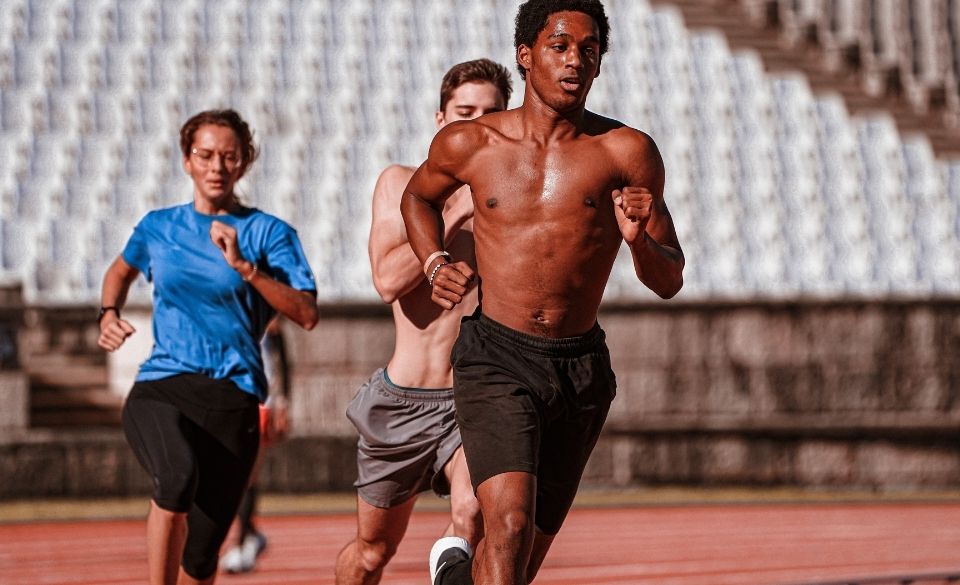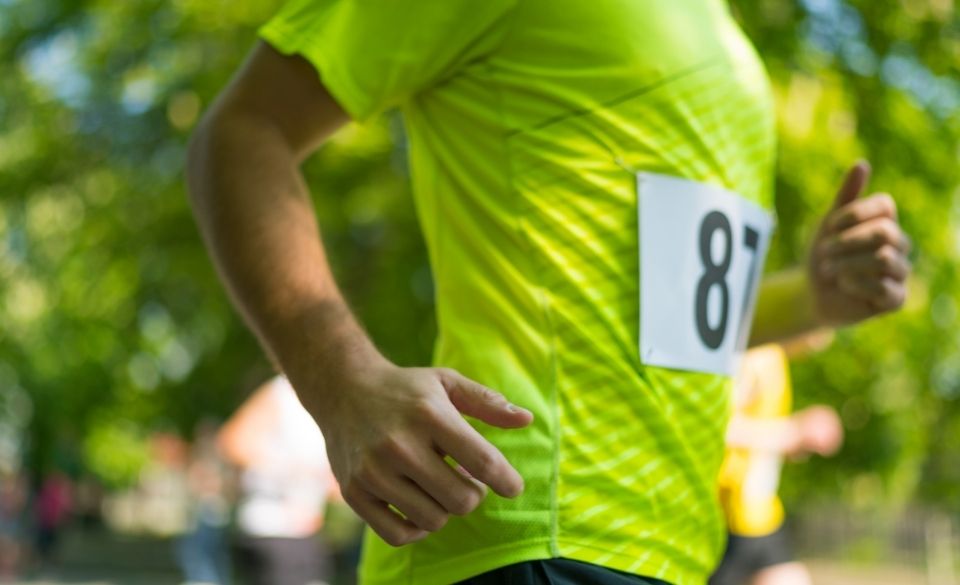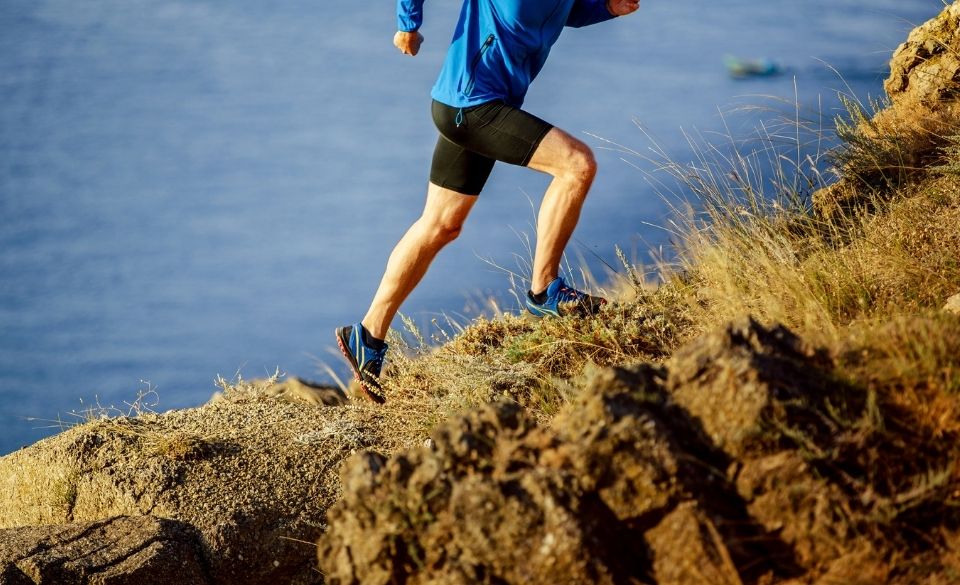
Does Running Build Muscle? What Should You Know in 2022
Page Contents
Often you see skinny runners flying along the footpath, and because of this many people think running doesn’t build muscle.
However, this can’t be further from the truth. Running is a great way to work the entire body and strengthen muscles.
Although many people think they may lose muscle mass, this is a general misconception.
In this article, we help answer the question “does running build muscles” As well as what muscles running helps build and strengthen in the body. So, keep reading to find out more.
Does Running Build Muscle? A Complete Guide
Does running build muscle? Yes, to some extent. However, it can be complicated. The amount of muscle you build will depend on how you run and how much you do. Let us explain this more.
Sprinting and steady-state running has a different impact on your body. Generally sprinting helps promote muscle growth, while steady-state runs can end up harming the growth of your muscles.
No matter if you are spending time lifting weights or running, both forms of exercise follow the same equation. Stress and recovery combined equal muscle gain. Without adequate recovery, muscles don’t recover, thus negatively affecting muscle growth.
Stress happens when you fatigue the body. This can be done through a tough workout or even a combination of workouts or periods of training. So, if you keep stressing the muscles and combine it with adequate recovery, you will start to see muscle growth.
Running uses key muscles to move and propel you forward. This mainly comes from the calves, quadriceps, and glutes. Other muscles like your core, shoulders, arms, and back are also used in running. However, these are used to a lesser extent.
Because of this, running builds lower body muscles than upper body muscles. How much will depend on how much you run, the duration of your workouts, and even the intensity.
So, the further you run and the harder you run, paired with adequate recovery, will see your core, glutes, quadriceps, and calf muscles build the most muscles.
Does Running Build Glutes?
The glute muscles play a large role in running. So, it won’t be surprising that the answer to the question is yes. Running does build glutes and other muscles in the bum region. Three of these muscles that running works are the gluteus maximus, gluteus medius, and the gluteus minimus.
Long-distance running is known to target type I muscle fibers in the glutes. However, it is not as good at building muscle in the glutes as sprinting or short-distance running. Sprinting targets larger type II fibers rather than type I muscle fibers. So, if you are looking to improve strength and size in the glutes sprinting may be a better choice.
Either way, if you want to challenge yourself and build a bigger bum or stronger glute muscles, you should pair your anaerobic and aerobic systems. That means mixing high-intensity running sessions (sprinting) with lower-intensity running (distance running).
Does Running Build Muscle Your Abs?
Even though running promotes muscle growth in the lower body, it does have an effect on your core muscles. While most runners won’t gain a six-pack, it can help to tone and shape your abdominal muscles.
If you have chosen to pick up running to build stronger abdominal muscles or a six-pack, the best type of running workout is speed work. Speedwork (or even sprinting) helps to develop stronger core muscles. Some workouts like 15-20 100m sprints can help engage the core muscles more. However, most people have some fat to lose around the belly. So, pairing speedwork with slow distance running will not only strengthen your abdominals but help you lose weight off the midsection.
It is also to remember that running or sprinting alone may not give you a defined and glistening six-pack. Your DNA, muscle structure, and body type all play a role. As well as your nutrition and diet.

What Upper Body Muscle Does Running Build?
Even though running tones and defines the lower body muscles, it still requires a strong upper body. So, what upper body muscles does running build?
Since most of the upper body movement comes from your shoulders when running, you use the anterior deltoid the most. This is located in the front of the shoulder. You also use the Latisimus Dorsi muscle which controls the movement of your arm backward, as well as the posterior deltoid, which is located at the back of your shoulder.
So even though they aren’t a major muscle group used, they are still important when running. Strengthening these muscles can prevent injury, improve running form and even help you stay relaxed when running at speed. So, don’t forget to spend time strengthening your upper body muscles. Your body (and running form) will thank you for it.

What Muscles Does Running Uphill Work?
Since running uphill is a concentric movement, the muscles shorten as they contract. This process is similar to when you lift weights. This action is largely controlled by the glute, calves, hamstring, and quadricep muscles. Then your upper body muscles help to propel your forward as well provide stability during each stride. This is seen more generally when the hill gets steeper and this is where having a strong core and upper body can help relieve some of the stress on the lower body, helping you to get up the hill easier.
However, since you lean slightly forward when running up a hill, you will find that your core will work harder than when running on the flat. This is because to stabilize the torso, the Rectus Abdominis needs to work harder. That means that doing uphill workouts, or hilly distance runs, will strengthen the abdominal muscles, which in turn, promotes better running posture and efficiency.
Conclusion
So, while this hopefully answers your question “Does running build muscle” there are many smaller muscles used in running. For someone that spends countless miles per week running it is important to combine weight training at least 2-3 times per week. This gives you an opportunity to strengthen these muscles, which will help to improve your running and prevent injuries. Giving you are more resilient body to train with.



